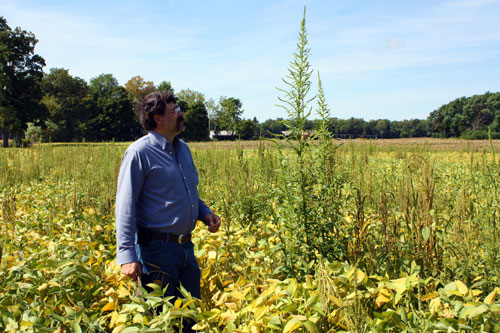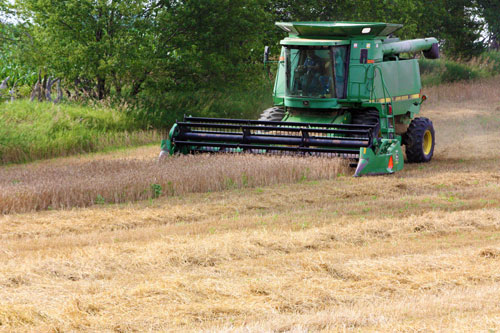Get a clean start on wheat harvest
Wheat harvest is an early opportunity to manage weeds in the 2013 crop.
|
|
Before you start harvesting wheat, clean your combine both outside and inside. Many species of weed seeds from last fall will survive well through the winter in the stone trap, auger troughs and various other places inside of the combine. If you acquired a used combine and are about to use it for the first time, it is especially important to go through this important chore, particularly if you don’t know exactly where the machine has been and what weed seeds maybe inside.
The introduction of new weed species and herbicide resistant weeds to Michigan such as glyphosate-resistant palmer Amaranth is troubling news for growers of all crops. It is especially troubling for growers of specialty crops such as pickles, dry beans and sugarbeets due to the relatively limited herbicide options for these crops. Preventing or at least delaying the arrival of these weeds is an important part of managing these pests.

MSU Extension’s Fred Springborn stands next to palmer
Amaranth, a
large and aggressive weed new to Michigan.
Here are a few suggestions to help reduce the risk of spreading weeds during harvest.
Before leaving a field and especially between fields under different management:
- Open the tailings elevator door and run the separator.
- Open the stone trap and clean it out.
- Use a broom to sweep chaff off the machine, especially at the back of the machine.
Give a critical look to all harvest equipment and operations. If baling straw, give the baler the same attention as the combine.
- Tie off and eject partial bales at the end of the field when practical.
- Sweep off the baler, trucks and wagons between fields.
With all equipment, keep safety shields in place. Consult the operator’s manual for additional cleaning, clean out and safety instructions.



 Print
Print Email
Email




